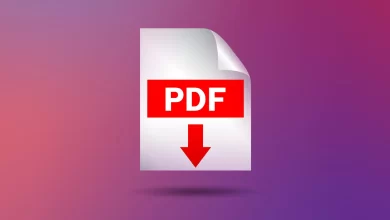Quantifying The Value of HR Tech

Organizations that have invested in HRM technology are reaping benefits today. They are way forward in their path to achieving business results than the ones lagging. HR remains at the centre of things, and that’s why you need to find ways to keep the HR practices relevant. It starts with using an efficient HRMS that offers employee-friendly features, such as a self-service portal.
A decade ago, most companies followed traditional methods for monitoring attendance or payroll calculations. They used HR software with limited capabilities. However, it’s a thing of the past. Now, you can invest in a cloud-based HR software system that solves most of your HR-related issues, including storing a large chunk of information or keeping the documents updated.
If we measure ROI on the HRM technology implemented, we need to consider the investment cost. It’s easy to calculate, and one can benefit more compared to the cost involved.
The How and Why of Calculating ROI
When planning to implement new tools and technology, organizations often look for measurable or quantifiable benefits. But it’s different in the case of HR. Most data are qualitative, and one may find it hard to bring ROI in the frame. Still, you need to make sure that you’re investing in the right cloud-based HR software to determine its
ROI. How do you do so?
You can consider calculating both direct and indirect costs. Let’s understand it better.
As you can upgrade or customize your HR software, there could be a fixed cost that you may have to pay monthly compared to the older methods of making a one-time payment to buy HR software with fewer features. Another cost could be related to training your HR department to use new HR tools. Then there are costs concerning data integration, maintenance, and migration.
As an HR practitioner, you should think from a broad perspective. Calculating costs based on monthly expenses incurred to use HRM technology is one way of looking at things. Consider training HR personnel or migrating data as indirect costs. The idea is to initiate a dialogue with your vendor about the one-time fee and recurring cost. These two can be different. This way, you will be able to determine the ROI efficiently.
The Need for Investing in HR Tech
Earlier in the blog, we have talked about several benefits of using HRM technology. Well, it’s not limited to using a proficient HR management software system. We are talking about using advanced technology that can boost the performance of the HR department.
When you plan to replace your existing HRMS, you may want to find a solution that allows access to HR services to your employees too. It’s 2021, and employee engagement is crucial to achieving business success. Your employees should know about their involvement. When you invest in the latest HR technology, you save time and can make better decisions. Here’s how some of the HR functions can become faster.
Faster screening and selection process: Artificial Intelligence plays a role in enhancing HR processes. Earlier, if meeting a candidate face-to-face was considered a norm, it’s time for pre-screening candidates through video interviews or introducing robotic interviewers to do so. It does save you time and effort. Besides, it’s a progressive way to brand yourself.
Data-driven analysis and decision-making: Remember the long-held discussions concerning appraisals and increments. Those long hours of deciding the cost and other things related to it, it’s redundant now. One can generate accurate reports of employees and assess an employee’s performance. It can help in deciding the best compensation. Besides, it gives you time to do other tasks.
Better data storage solutions: As an experienced HR practitioner, you must have relied on paperwork to gather and store employee data. All those piles of documents could have been hard to read. Thanks to the cloud-based HR software systems that help you relax. From screening a candidate and welcoming them onboard to storing data until one exits the organization, you can store data safely.
What Happens If You Don’t Invest in the Emerging HR Technology?
If you don’t invest in the latest HRM technology, you lag. There’s no other way of saying it. Not only do you fail to engage your employees better, but your HR processes continue to be repetitive and time-consuming too. Let’s shed some light on this topic.
It can cost you money
For any flourishing business, time is money. You may continue to incur training and travelling cost if you don’t invest in the latest HRM technology. How? If it’s about training an employee on a new product, you may have to visit the location. Whereas; you can use virtual training programs to reduce the training cost if you consider using efficient HR tools.
Besides, your HR software may need an upgrade now and then, and you end up paying a hefty amount every time you wish to add a feature. In the end, it can cost you more than the benefit you.
No room for employee engagement
In 2021, the main focus of the HR department is to nurture and retain employees. From investing heavily in upskilling the workforce to making them self-reliant, they are making the best use of HRM technology to delight employees.
The ones who are using chatbots to promote effective communication at the workplace are ahead of others. They understand the need for employee engagement. Even if it’s about conducting a poll or survey to get the feedback of their employees on the latest office development, they don’t shy away from involving their employees while making decisions. It’s how you build a productive and happy workforce.
Unstructured HR processes
If you keep following old HR practices to do your tasks, you will lag. You will have a lot to catch up on when you decide to upgrade. It’s also about switching to an HRMS that eases your day. You would want to integrate different HR functions, say to expedite payroll calculations. For that, you need to shift your mindset from relying on traditional HR practices and using technology to your advantage.
You may fail to attract talent
If you think of HRM technology as a cost and not an investment, you may fail to attract talent. Big organizations like Google and Apple understand the need to position themselves as an employee-centric brand. It starts with implementing employee-friendly policies, including a self-service portal to offer a delighting employee experience.
Embrace the change
In the end, your organization needs people to make money. If your people are happy, it, in turn, makes your customers happy. When you can implement customer-centric strategies to woo your loyal clientele, it’s equally important to invest in upskilling your workforce and make them feel valued.
With bringing HRM technology into the frame, you’re doing all that one needs to do to stay relevant in today’s time and reach milestones using the latest technology offerings.






